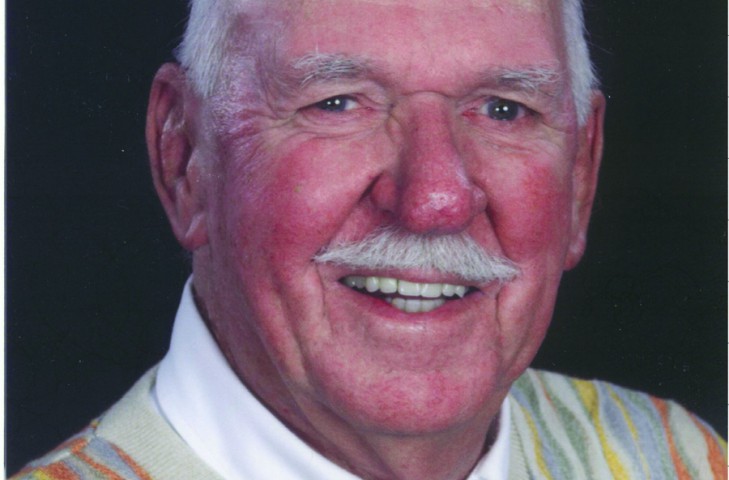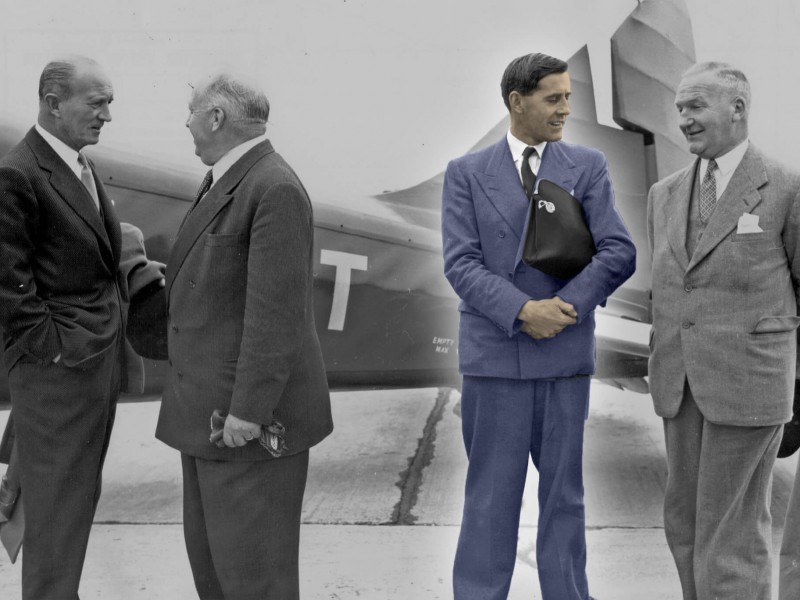Robert “Kas” Kastner, founder of the Triumph USA Competition Department
By Rob Mullner, photography courtesy of Kas Kastner
In the second installment of our Hero feature we are spotlighting someone whose name is spoken in revered tones by Triumph racers and enthusiasts, Kas Kastner. If you have ever thumbed through a copy of the Competition Preparation Manual for TR-250/TR6, lusted after tubular pushrods or deeply pondered the differences between S2 and S4 camshafts you already know something about the man and his work. He single-handedly launched Triumphs’ very successful Competition Department and literally wrote the book on tuning Triumphs for higher performance. After reading his updated and expanded Triumph Preparation Handbook I asked Kas questions about racing, restomodding and related topics. It should come as no surprise that his answers were sharp and insightful.
Q. Considering the different types of racing you have been involved in (vintage sports cars / IMSA GTP’s with Nissan Motorsports /sail boats) which is your favorite and why?
A. I really have three favorites. The GTP (Gran Tourismo Prototype) was “it” for motor racing. It was so close with serious competitors, Geoff Brabham was one of the Nissan drivers and the cars were so fast, they demanded supremely talented drivers like Geoff. In particular I loved the management of the team and developing and implementing the race strategy. Racing sail boats was very similar, but in a different vein. It took a cool head to develop a plan and you had to use everything available besides the boat. The elements and how the waves and wind worked and changed meant the boat had to be constantly tuned every minute to achieve maximum performance. Truly a thinking mans’ game since your mistakes might not show up for 30 minutes so you’d better know what you are doing. Loved it. And Vintage racing, since it’s about the cars that I used to drive and tune and work with, hands-on. Because it was so hands-on I remember a great deal about the tuning etc. and this makes it even better. In some cases I still have special tools I used.
Q. What are your thoughts on the state of vintage racing? If you could implement one change that would apply to the various vintage rulebooks what would it be?
A. Vintage racing needs a ruling group to solidify the regulations throughout the country. SCCA really dropped the ball in this as they were the obvious people to run Vintage racing, but as usual they were out having lunch when the deal happened. Now, there are countless organizations, all of which have a different rule book, and it makes it very difficult for the poor competitor. In most classes or clubs about the only thing that is Vintage is the body shape. That’s being pretty hard on a lot of people that are working hard to make it all work, but that is how is appears to me. I’m not necessarily correct in my view, but Vintage in most cases it is not. But what is Vintage? Only what you decide as a group is a reasonable way to race these neat old cars. Then too, why do you need or want to run cars without a supply of the proper parts, outmoded junk and costly after market replacements? I suppose you need to
Q. Considering the different types of racing you have been involved in (vintage sports cars / IMSA GTP’s with Nissan Motorsports /sail boats) which is your favorite and why?
A. I really have three favorites. The GTP (Gran Tourismo Prototype) was “it” for motor racing. It was so close with serious competitors, Geoff Brabham was one of the Nissan drivers and the cars were so fast, they demanded supremely talented drivers like Geoff. In particular I loved the management of the team and developing and implementing the race strategy. Racing sail boats was very similar, but in a different vein. It took a cool head to develop a plan and you had to use everything available besides the boat. The elements and how the waves and wind worked and changed meant the boat had to be constantly tuned every minute to achieve maximum performance. Truly a thinking mans’ game since your mistakes might not show up for 30 minutes so you’d better know what you are doing. Loved it. And Vintage racing, since it’s about the cars that I used to drive and tune and work with, hands-on. Because it was so hands-on I remember a great deal about the tuning etc. and this makes it even better. In some cases I still have special tools I used.
Q. What are your thoughts on the state of vintage racing? If you could implement one change that would apply to the various vintage rulebooks what would it be?
A. Vintage racing needs a ruling group to solidify the regulations throughout the country. SCCA really dropped the ball in this as they were the obvious people to run Vintage racing, but as usual they were out having lunch when the deal happened. Now, there are countless organizations, all of which have a different rule book, and it makes it very difficult for the poor competitor. In most classes or clubs about the only thing that is Vintage is the body shape. That’s being pretty hard on a lot of people that are working hard to make it all work, but that is how is appears to me. I’m not necessarily correct in my view, but Vintage in most cases it is not. But what is Vintage? Only what you decide as a group is a reasonable way to race these neat old cars. Then too, why do you need or want to run cars without a supply of the proper parts, outmoded junk and costly after market replacements? I suppose you need to call this type of racing something, and Vintage will just need to serve. This racing is giving a lot of folks a lot of fun with wonderful cars and you can run as hard as you think you need.
Q. What is your favorite racetrack and why?
A. I always loved Riverside. I did much testing and racing there and I ran the Drivers School for 3 years. I turned hundreds and hundreds of laps at Riverside. Road America and Watkins Glen are up there too. They are all fast tracks with reasonable pit areas, nice geographically and were a good test of the car, and of course I appreciate their history.
Q. What is your favorite TR modification and why?
A. I really loved the overdrive transmissions and used them in all my cars except the Spitfires and the GT-6. I spent an incredible amount of time testing camshafts on the engine dyno. The cam is the heart of the engine in my mind. Some of the grinds I developed are still running in top cars today. My blueprint for modifications began with an idea that I thought might benefit lap times. I would then make a part or system to further this idea and go try it at the track. If it worked I would study the regulations to see how I could justify the modification. To meet the rulebook I might have to reduce the effectiveness of the modification, I’d do that then test again. If I could retain 50% of the advantage versus the original parts, I’d go ahead and race it. And if it did not retain that much advantage there was no point proceeding and having headaches and arguments. I always had the tracks cut up into several segments. Every place we went through out my life in all those different cars. I still have the little spiral notebooks I used in the GTP days. I have 108 of those little books right now out in the garage from tracks all over the country and even LeMans. I took splits forever. That way not only do you know where you are fast, but more importantly you learn where you are SLOW. It allows you to center your thinking and attention. Even now, when I go to the track for a Vintage event, I have my two watches and set up splits so I know who is fast and where
Q. Which Triumph model was your favorite to develop and race?
A. I loved my TR-3 but the TR-4 was easier to work with, faster and is still the backbone of most Triumph racing. Great car. The Spitfire has probably brought more people to racing over the years than any other model. Neat looking, easy to work on (loved to sit on the tire as I adjusted the valves), kind of cheap to run, lots of pieces available.
Q. If you were to resume a racing career which racing series would you most enjoy? NASCAR, ALMS, F1, America’s Cup; and what role would you most like to play? R&D/Development, Team Strategist, Team Manager?
A. F1 racing is what I watch and follow closely so it would need to be that. All of the strategy required with pit stops would be of particular interest. I love it when things CHANGE. Weather or tires or other conditions where you need to make snap decisions on the spur of the moment. I am not a Ron Dennis (Mercedes McLaren team principal) type, his team is winning, but he does make it tough on himself by not designating a number one driver. I enjoy being part of the R&D program to sort through and listen to the fresh and new ideas and how to deal with them; in particular how to interpret those ideas with respect to the regulations. I figured you always had to have a point of argument for every mod that might be close to the edge of the rules. Worked too. I have done some pretty funny stuff along the way. Sorry, even now, no words out of school.








'Hero: Robert “Kas” Kastner' has 1 comment
August 16, 2018 @ 10:38 am Bolse Solheim Norway and Marbella
My name is Bolse Solheim. Kas was always my hero. I bought my TR4 on my birthday in June 1963. My beloved Car is still in my posession in My Beloved Marbella, Spain! I bought my Magnesium Minilite 6″ wheels from Sid Hurrel in Leighton Buzzard some years later!